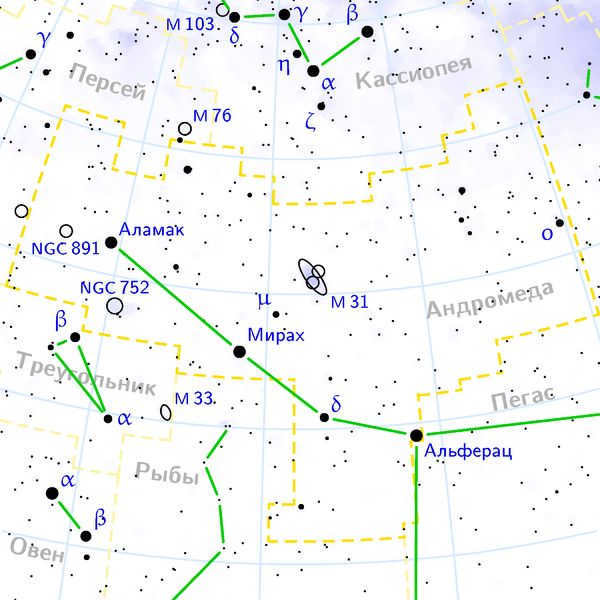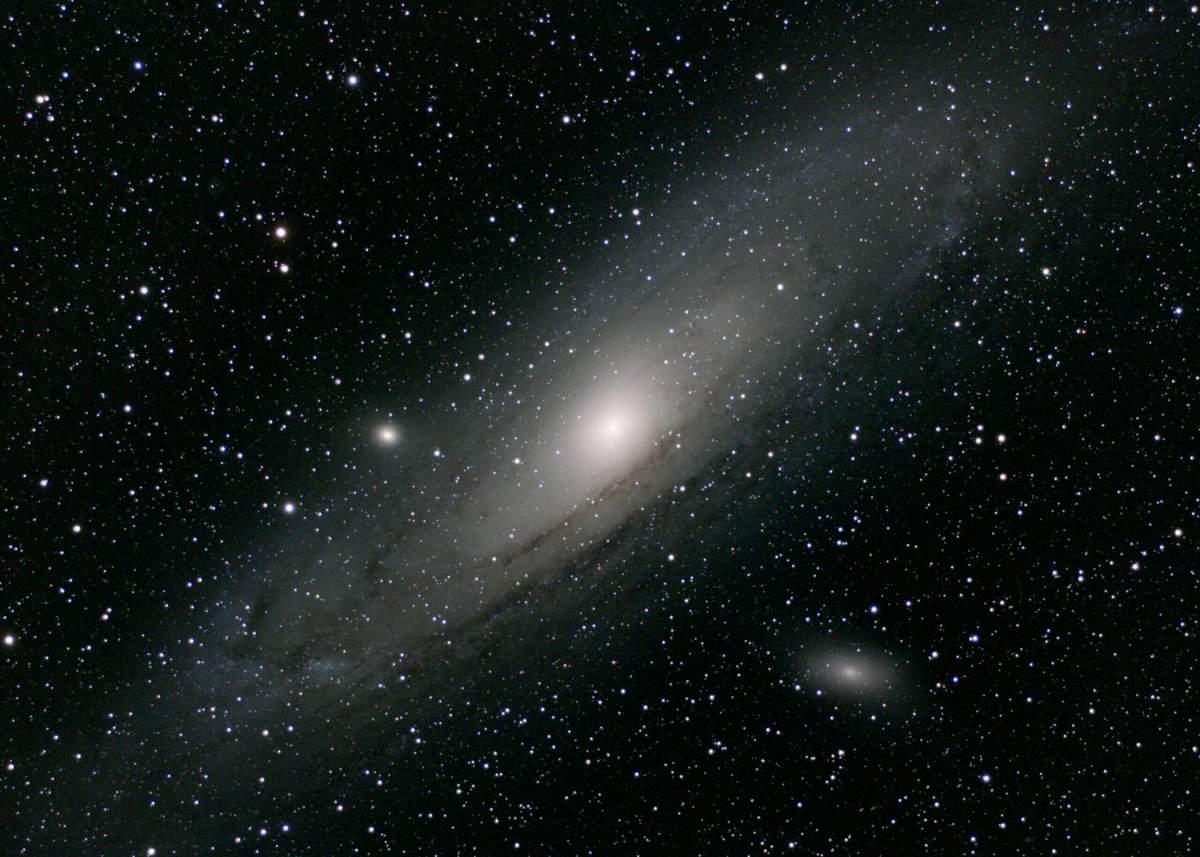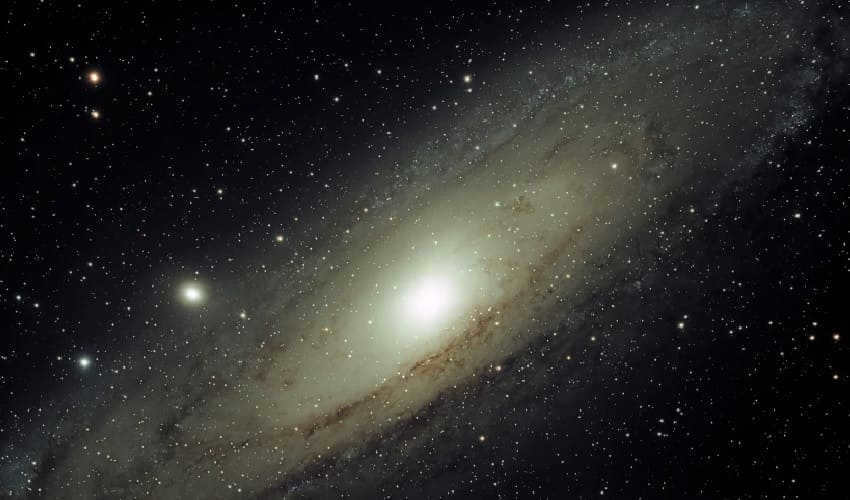
The Andromeda galaxy was first mentioned as a recognizable hazy object in 946 by the Persian astronomer As-Sufi in his “Catalog of Fixed Stars”.
There is also a depiction of the constellation, where the galaxy appears as a small floating cloud beneath the palm of the right hand of the mythological heroine.
The initial observation of a nebula through a telescope was recorded by the German astronomer S. Marius in 1612, and in 1785 William Herschel discovered a faint red spot at the center of this entity, which he believed to be the nearest nebula to Earth.
Eventually, Ch. Messier included the Andromeda Nebula in his catalog, designating it as M31.
Back in 1887, a notable British astronomer named I. Roberts managed to capture the very first photograph of the galaxy, revealing its distinct spiral structure. However, during that period, astronomers firmly believed that it was simply another planetary system taking shape within the expansive Milky Way galaxy.
Ultimately, the definitive explanation regarding the true nature of the Andromeda Nebula was provided by E. Hubble. He conclusively demonstrated that it is, in fact, an enormous stellar system.
The Andromeda Galaxy is not the nearest galaxy to us. The closest galaxies are the Large and Small Magellanic Clouds and several dwarf galaxies that are not visible to the naked eye.
However, these galaxies are simply satellites of the Milky Way galaxy, while the Andromeda galaxy is a star system of the same type as ours.
That is why it has become a kind of “mirror” for astronomers, allowing them to study the structure of our own stellar system from an external perspective.
Andromeda is a large spiral galaxy surrounded by a sparse halo and contains spiral “arms” in its disk. It is one and a half times larger than the Milky Way in terms of size and mass, and it contains up to a trillion stars.
The Andromeda galaxy also has its own satellites – two easily distinguishable small star systems with irregular shapes when observed through a telescope.
The “cosmic mirror” has a slight drawback – its orientation to us is not direct, but at an angle of 15°, almost like a side view. Nonetheless, through studying the composition of the Andromeda galaxy, astronomers have been able to uncover numerous fascinating features and objects that are typical of spiral galaxies – including our own.
What is the closest galaxy to us?
The nearest galaxy to our own, the Milky Way, is the Andromeda Nebula, also known as the Andromeda Galaxy, which is a large spiral galaxy.
Visible as a bright spot in the constellation Andromeda, it is roughly twice the size of our own galaxy.
The Andromeda Nebula is located approximately 2.3 million light-years away, but its immense size and brightness make it visible to the naked eye.
In fact, it is the farthest object that can be observed from Earth without the assistance of a telescope.
What makes the Andromeda Nebula unique?
Scientists have identified a remarkable feature in the Andromeda Nebula – a luminous ring, also known as a halo, which is estimated to be approximately 260,000 light-years in diameter. This is nearly twice the size of the bright disk visible in the photographs.
This outer disk is responsible for emitting nearly 10% of the total light from the galaxy. It is believed to consist of stars that have separated from smaller galaxies that came too close to Andromeda.
In 2007, a team of astronomers made an intriguing discovery – red giant stars with low metal content located up to 500,000 light-years away from the center of the Andromeda Nebula. This finding suggests that the nebula is significantly larger than previously believed, and its luminous halo may even overlap with that of the Milky Way.
Advancements in the construction of powerful astronomical tools were a notable feature of the early 20th century. One of the most renowned instruments was the Mount Wilson Observatory telescope in the United States, boasting a main mirror diameter of 2.5 meters.
It was on this immense telescope in 1923 that Edwin Hubble, the esteemed pioneer of extragalactic astronomy, achieved the feat of “resolving” the outer regions of the Andromeda Nebula into individual stars.
Hubble’s findings demonstrated that the nebula was not merely a gathering of gas and dust, but rather a stellar system. Among its stars, he also discovered a small Cepheid.
By studying the variations in its brightness, the astronomer was able to make an approximate determination of the distance to the edge of the nebula, which amounted to 1 million light years.
Actually, it’s more than twice as large, but at that time it wasn’t important – the Andromeda Nebula was already far beyond the Milky Way. Before the scientist appeared another galaxy, which later turned out to be similar to ours, but completely independent.
Nebulae with peculiarities
Initially, Edwin Hubble focused on nebulae – objects whose nature was still unclear to astronomers.
By examining the nebulae visible in the Milky Way belt, Hubble proved that they only emit light because they conceal stars within them – the gas in the nebulae converts the stars’ ultraviolet radiation into visible light.
The astronomer made a groundbreaking find when he stumbled upon nebulae beyond the Milky Way. He meticulously classified them into three distinct types: spiral, elliptical, and irregular. Little did he know, the nebula in the constellation Andromeda would hold even more surprises.
After carefully studying the luminosity and brilliance of two newly discovered stars, the scientist came to a startling conclusion. The Great Andromeda Nebula was not just a random celestial object, but rather a distant star system located outside our own Galaxy.
As if that wasn’t enough, two additional star systems located beyond our Galaxy were soon discovered. This revelation shook the scientific community to its core, as it unveiled an expansive Universe teeming with countless “star islands”. However, the most groundbreaking discoveries were yet to come.
Similar – yet different
The Milky Way and the Andromeda Galaxy share several common features, such as a spiral structure, a nucleus, a halo, and satellite galaxies.
However, advancements in astronomical technology, such as the Hubble, Chandra, and Spitzer space telescopes, have allowed astronomers to uncover astonishing phenomena within the depths of the Andromeda Galaxy that are not found in our own galaxy.
At the core of the Andromeda galaxy, astronomers have detected an incredibly powerful source of X-ray radiation, which can only be attributed to the presence of a supermassive black hole with a mass of approximately 140 million times that of our Sun.
This “supermassive black monster” is surrounded by a disk of 400 young blue stars, which orbit around the black hole in a manner similar to planets orbiting the Sun.
The behavior of these stars goes against the calculations made by astrophysicists: firstly, in such conditions, they were not supposed to form at all, and secondly, they should have collapsed onto the surface of the black hole a long time ago.
What makes these “blue intruders” unique is their incredible radial speed, reaching approximately 3.6 million kilometers per hour. At this velocity, one could circumnavigate the globe in just 40 seconds. The disk of blue stars, located around 5 light years away from the “black hole,” is surrounded by a ring of ancient red stars.
The Andromeda Galaxy holds the record for the highest number of globular star clusters, with a total of 460. However, the Mayol II cluster is of particular interest. Situated 130 thousand light years away from the galaxy’s center, it consists of 300 thousand aged stars.
A team of astronomers has confirmed that the Andromeda galaxy is currently moving towards the Sun at a velocity of 100-140 km/s, resulting in a noticeable violet shift in its spectrum. Based on this velocity, it is estimated that a collision between these two galactic systems will take place in approximately 2.5-3 billion years.
If this cosmic event occurs, the merger of these two massive spiral galaxies will create a supergiant galaxy of an unknown shape, defying prediction.
During this process, the intense gravitational disturbances could potentially fling the entire Solar System into the vastness of intergalactic space. However, it is important to note that this would not have any significant impact on the Sun, which would have already evolved into a red giant by then, nor on the planets.
It is crucial to understand that such astronomical phenomena should not be perceived as catastrophic events, as they are actually quite common in the vast expanse of the Universe. Due to the immense distances between stars, collisions and destruction are exceptionally rare during these galactic encounters.
Stars in the Equatorial Sky
As autumn arrives, the night sky becomes darker, revealing a stunning display of stars.
The arms of the Milky Way are clearly visible, and under ideal conditions, even distant objects like the renowned Andromeda Nebula can be observed with the naked eye – it appears as a hazy elongated patch within the Andromeda constellation.
Astronomers have long suspected that this is not merely a cloud of gas and dust, but rather a massive stellar system located far beyond our own galaxy. However, it was only E. Hubble who was able to definitively prove this.
Equipped with the most powerful telescope of its time, featuring a 2.5-meter mirror, Hubble successfully “resolved” the enigmatic nebula into individual stars, much like Galileo Galilei once did with the Milky Way.
Dental characteristics of mammals
When will we see the emergence of a comprehensive theory in physics?
What is the reason behind feeling dizzy when spinning like a wolf?
Who should be credited as the inventor of the first computer?
In the event that your child goes missing, every second counts and must not be wasted
- Australia and Oceania (40)
- Asia (30)
- America (59)
- Antarctica (15)
- Africa (26)
- Household appliances (35)
- Time (25)
- Dinosaurs (16)
- Europe (28)
- Mix (43)
- Internet and Computers (19)
- History and Archaeology (25)
- Space (285)
- Animal World (158)
- My Planet (134)
- Science and Technology (120)
- Society (60)
- Nature (160)
- Psychology (104)
- Agriculture (17)
- Tigers (26)
- Humans (131)
- Ecology (24)
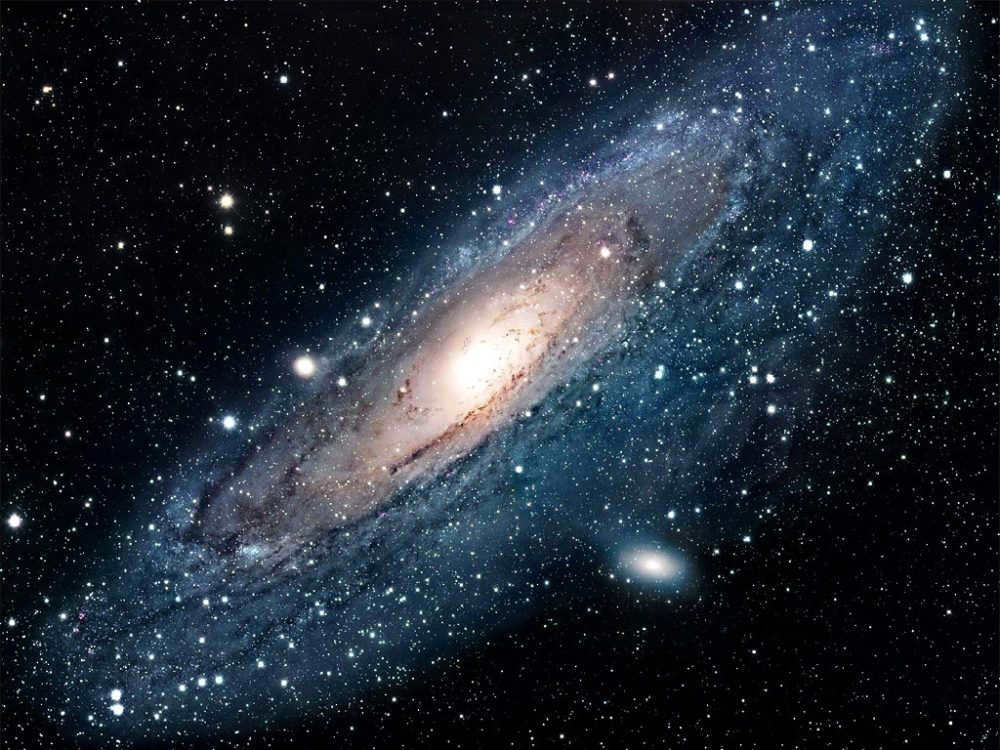
The vastness and wonders of our universe are truly astonishing. It is only in recent times that we have begun to comprehend the true scale of it all. Amidst the countless nebulae and billions of stars, it is the celestial objects closest to us that hold the greatest fascination for scientists. Among them, the Andromeda Nebula, also known as M31, is the closest galaxy to our very own Milky Way.
It can be referred to as the most extensively researched of the star clusters. In terms of its composition, the Andromeda galaxy bears a resemblance to the Milky Way. It is home to numerous globular clusters, dozens of black holes, and several satellite galaxies. Through the examination of this galaxy, scientists are gaining a deeper understanding of our very own star cluster. M31 consistently manages to astound researchers: recently, it was uncovered that it possesses a distinctive dual nucleus and an extraordinary collection of hundreds of stars orbiting around a massive black hole.
The Andromeda Nebula has been a subject of interest for scientists and astronomy enthusiasts for many centuries, with its first recorded mention dating back to the 10th century. It is possible that knowledge of its existence goes even further back in ancient times. However, it was not until modern times that serious and systematic studies of this celestial object began. It is worth noting that the Andromeda Galaxy has also gained significant popularity among science fiction writers, creators of computer games, and Hollywood directors.
If the right conditions are present, it is possible to observe the Andromeda Galaxy with the naked eye. However, using binoculars or a simple telescope can greatly enhance the effectiveness of your observations.
Astronomers have a penchant for using mythological heroes’ names when assigning titles to celestial objects. The galaxy M31, for example, is named after a princess who was the daughter of Cepheus and Cassiopeia.
According to the myth, Cepheus incurred the wrath of Poseidon, the god of the seas and oceans, by boasting, and as a result, he was forced to sacrifice his own daughter Andromeda to a fearsome monster. However, she was ultimately saved from a gruesome fate by Perseus, who happened to be passing by on his mission. Perseus slew the monster and took Andromeda as his wife.
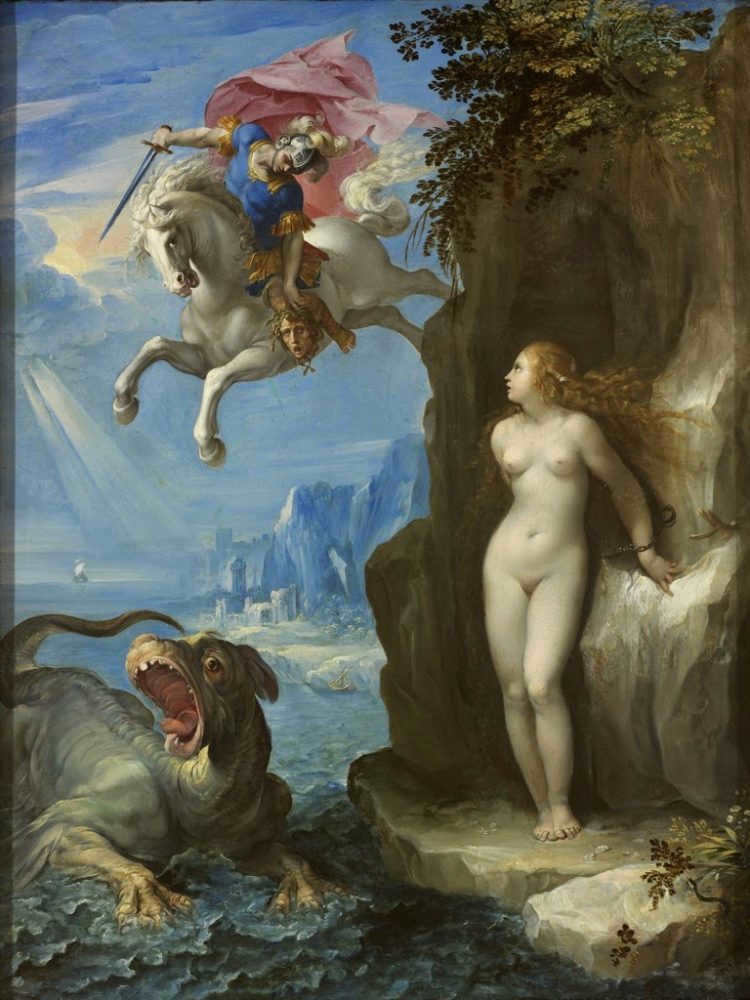
Subsequently, star clusters were given the names of the main characters in this tale – and so, constellations such as Perseus, Andromeda, Kit, and Cassiopeia appeared in the night sky. However, it wasn’t until the mid-19th century that people discovered that one of the objects within the Andromeda constellation was actually a massive cluster that extends for hundreds of thousands of light-years.
Discovery and Observations of M31
The history of M31, also known as the Andromeda Galaxy, dates back to the 10th century (946). The first mention of this galaxy can be found in the work of the Iranian astronomer al-Sufi, who referred to it as a “small cloud” in his “Catalog of Fixed Stars”. Although it is possible that the existence of this cluster was known earlier, there is no surviving evidence.
The first detailed study of M31 using a telescope was conducted in 1612 by the German scientist Simon Marius. However, it was the famous French astronomer Charles Messier who mistakenly attributed the discovery of M31 to Marius in the mid-18th century. Messier used a powerful telescope with a large six-inch mirror to observe the star cluster. In 1767, he included the nebula in his renowned catalog, assigning it the designation M31.
In 1785, Herschel made an attempt to measure the distance between the solar system and M31, but his calculations turned out to be significantly inaccurate. He was under the impression that this celestial object was the closest nebula to Earth.
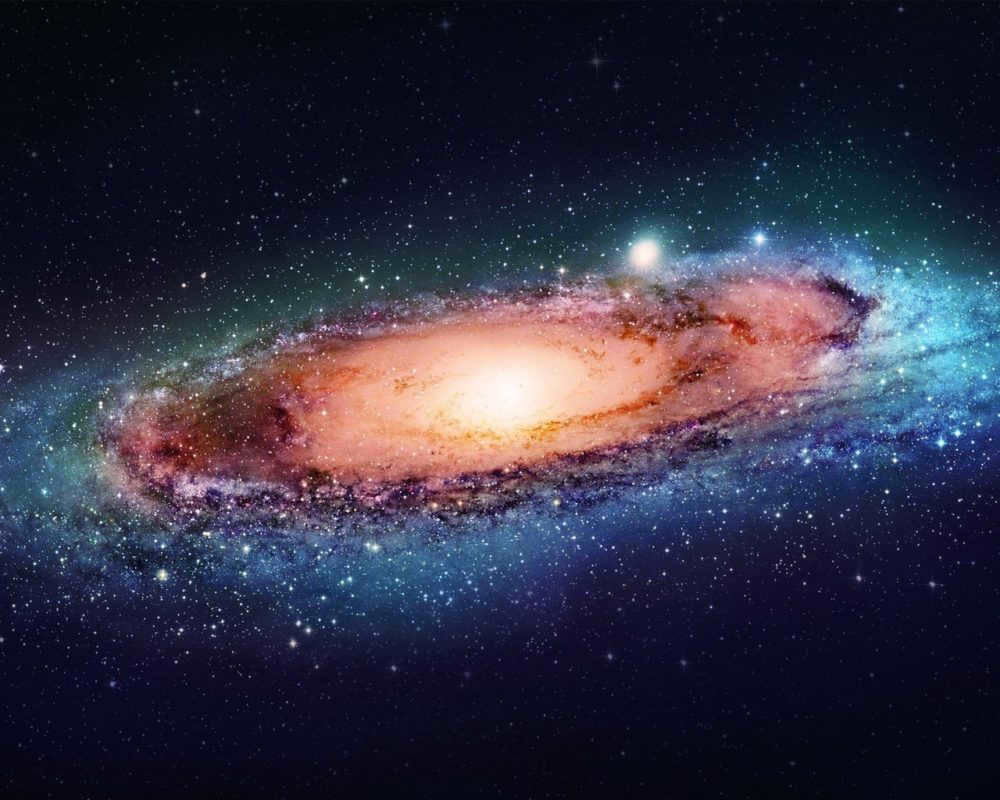
In 1864, the spectrographic method led to the discovery of the stellar nature of M31 by William Huggins, a finding that was later confirmed. Later, in 1885, M31 became the site of a remarkable event when the supernova SN 1885A exploded, making it a unique occurrence that is recorded in the annals of astronomy. Isaac Roberts made history in the same year by capturing the first photograph of M31 and describing its structure. However, he mistakenly believed that M31 was part of the Milky Way, mistakenly identifying it as an ordinary star system in the early stages of planet formation.
During the early 20th century, American scientist Vesto Slifer utilized spectral analysis to calculate the radial velocity of M31, revealing that it is moving at a speed of 300 km/s.
In the early 1920s, astronomers engaged in a significant debate known as the “Great Controversy.” This discussion centered around the size of the Universe, the position of the Milky Way within it, and the total count of galaxies. The two opposing viewpoints were represented by astronomers Curtis and Harlow Shapley. Curtis argued that distant nebulae were separate galaxies, while Shapley believed that the Milky Way encompassed the entire universe, with nebulae and other celestial objects being integral parts of it. The dispute was eventually resolved in 1924 by another prominent American astronomer, Edward Hubble. Hubble’s measurement of the distance to the Andromeda Nebula demonstrated that it did not belong to our galaxy but was, in fact, an independent star cluster. This discovery confirmed the existence of numerous other star clusters, ultimately leading astronomers to realize that there are billions of them in total.
In 2006, scientists made a groundbreaking discovery using the cutting-edge space observatory “Chandra”. They observed a brilliant flash in the core of M31, causing its brightness to surge by a staggering hundredfold.
In 2015, the Hubble orbiting telescope captured the most impressive image of the M31 galaxy. This stunning photo, with a resolution of 1.5 billion pixels and a file size of 4.3 GB, showcases the beauty of 100 million stars spanning a distance of 61 thousand light-years. Capturing such an image from Earth is a tremendous challenge, as atmospheric interference and distortion can compromise the quality of the photo.
Distinctive Features and General Description
The Andromeda spiral galaxy, classified as Messier 31, is situated in the constellation that shares its name. It falls under the Sb category and houses approximately one trillion stars, which is 2-2.5 times more than what the Milky Way contains.
Situated at a distance of 2.52 million light-years from our planet, the Andromeda Galaxy’s light reached our sight long before modern humans appeared on Earth. The star cluster’s mass is approximately 800 billion times that of the Sun.
Both the Milky Way and M31 are currently moving towards each other with a velocity of 100 kilometers per second, indicating that an intergalactic collision is inevitable in the future. However, there is a positive aspect to this scenario: this collision will not occur for at least three billion years and its repercussions will not be catastrophic. Instead, the two galaxies will gracefully merge, resulting in the formation of a unified entity.
Structure and composition
M31, also known as the Andromeda Galaxy, is the largest stellar cluster within the Local Group of galaxies. This celestial body is approximately 2-2.2 times larger than our very own Milky Way. If M31 emitted more light, it would outshine the Moon, making it easily visible in the night sky.
Based on observations made by the Spitzer orbiting observatory, M31 is currently known to have around ten satellite galaxies. However, scientists anticipate that this list will continue to grow in the future as more discoveries are made. Among these satellites, M110 and M32 are considered the brightest, and they can be observed even with a basic telescope.
At the heart of M31 lies what is likely a supermassive black hole, weighing millions of times more than our Sun. Encircling it, akin to planets orbiting a central star, are hundreds of young blue stars that whiz around at incredible speeds. Astronomers estimate that these stars are no more than 200 million years old. The most intriguing aspect is that these rotating stars form a disk that resembles a ring, spanning a distance of one light-year. One can only imagine the awe-inspiring spectacle of witnessing such a phenomenon up close.
This phenomenon has left scientists puzzled as the immense gravitational force of the black hole should prevent interstellar gas from condensing and giving rise to new stars.
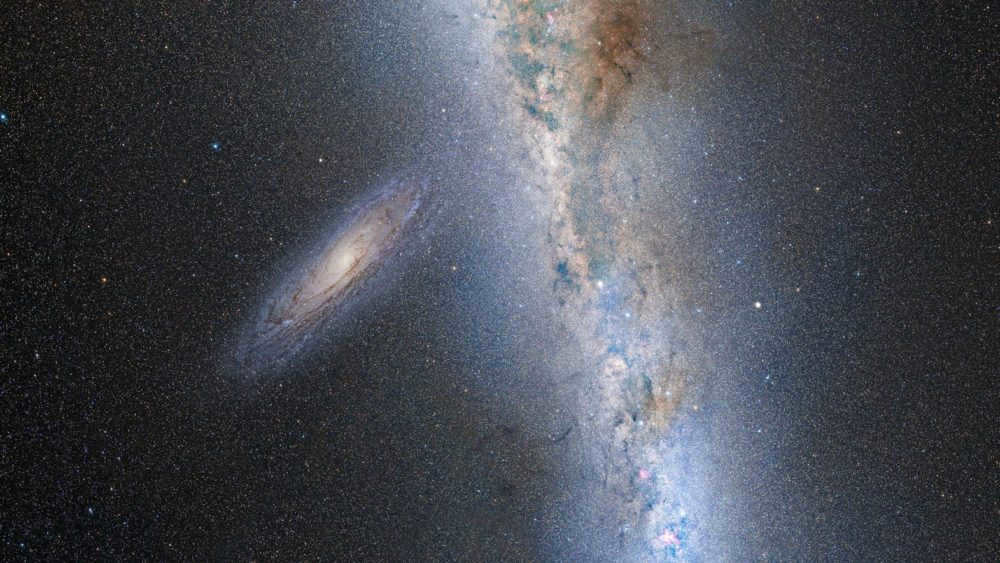
In 1993, astronomers made a fascinating discovery at the heart of M31 – a binary star cluster. This finding was quite unexpected as these clusters typically merge relatively quickly in astronomical terms.
Globular clusters, which are held together by gravitational forces, are dense groups of stars. The Andromeda Nebula is known for its abundance of such formations, with over 460 of them having been discovered. It is likely that new clusters of this kind will be identified on the map of the Andromeda galaxy in the coming years, as many areas of the galaxy remain poorly explored.
One of the largest globular clusters in the Andromeda Nebula is Mayall II (G1), which also happens to be the brightest in our Local Group. It is composed of approximately 300,000 stars. Scientists speculate that Mayall II may have originated as the core of a dwarf galaxy that was engulfed by M31. Furthermore, there is a possibility that this cluster harbors another massive black hole, with a mass twenty thousand times that of the Sun, at its center.
In 2005, astronomers made a fascinating discovery in M31 when they came across star clusters that were quite different from the standard globular clusters. These clusters were found to be significantly more massive, leading scientists to classify them as an intermediate class between dwarf spherical galaxies and globular clusters.
Moving on to a different topic in M31, it is worth noting that there is a significant presence of black holes in this galaxy. A few years ago, researchers confirmed the existence of 35 black holes, with several dozen more being considered potential candidates for this prestigious title. While most of these black holes are relatively small, with a mass of 5-10 times that of our Sun, there are also massive giants that weigh tens of thousands of times more than our own star. Interestingly, seven of the known black holes in M31 are located approximately a thousand light-years away from the galaxy’s center.
A couple of years ago, two unidentified black holes were detected in M31, located in very close proximity to each other, with a distance of 0.01 light-years between them. Astronomers are highly confident that these objects will eventually merge, and this event is anticipated to occur within a few centuries.
Is there any existence of planets in the Andromeda Galaxy? This question can certainly be answered in the affirmative: scientists have successfully identified an exoplanet that orbits around the star PA-99-N2. There is little doubt that this is just the beginning, as a considerable number of planets have already been discovered in our galaxy, and it is highly likely that there are just as many in M31.
How to locate M31 in the night sky
Wondering how to spot the Andromeda galaxy in the vast expanse of stars? If you meet the following criteria, you can easily find it even without any optical aids:
- It is advisable to observe from remote areas, away from human settlements. The brightness from numerous street lights, billboards, and car headlights renders most stars invisible. Even the Milky Way is obscured in major cities. Additionally, the typical air pollution found in urban environments greatly hampers celestial observations. Dust, fog, and smog cause the view to appear hazy and indistinct;
The best time to observe the Andromeda Galaxy is when it is positioned high above the horizon. This occurs after midnight during the months of August and September, and late in the evening in November and December.
Locating the Andromeda Galaxy in the night sky can be easily done using two methods:
One way is to locate the square of Pegasus by facing south and looking up. The constellation Andromeda can be found by following a chain of stars that extends eastward from the upper left corner of the square. Mirach, located in the middle of this chain, along with μ and ν Andromeda, form the belt of the constellation. The Andromeda Galaxy, M31, is directly above Mirach.
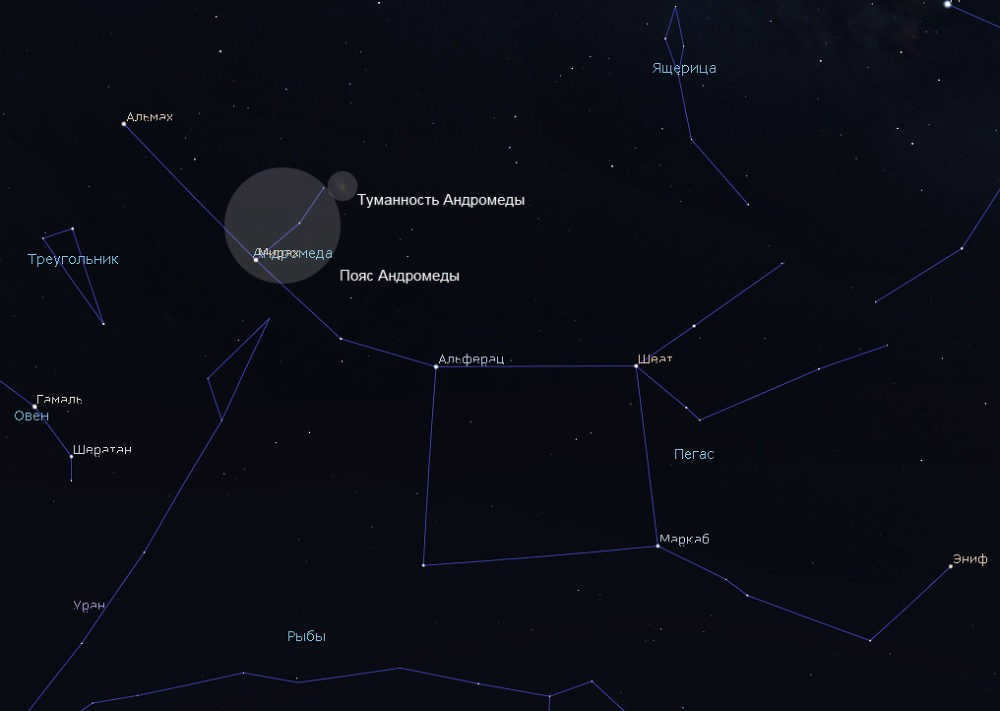
Locating the Andromeda Galaxy is even simpler by using Cassiopeia as a point of reference, which is one of the most prominent constellations in the autumn sky. It has a distinct shape resembling the letter W in the Latin alphabet and is positioned near the zenith during the fall season. To locate the Andromeda Galaxy, one should focus on the right half of the celestial letter, which is sharper and acts as an arrow pointing towards the desired object. The distance to the Andromeda Galaxy is approximately four times greater than the distance between neighboring stars in Cassiopeia.
If the Andromeda Galaxy is not visible to the naked eye, a pair of regular binoculars can be used to make the search easier compared to using a telescope.


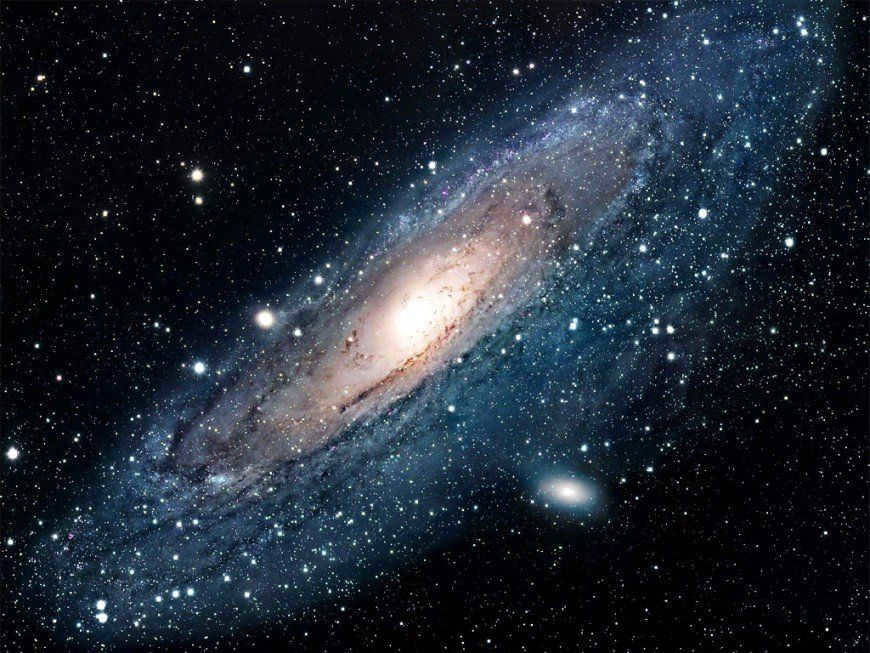
The Andromeda Galaxy (also known as Andromeda, M 31, NGC 224, or Andromeda Nebula) is a spiral galaxy of the Sb type and is the largest galaxy in the Local Group. It is the closest large galaxy to the Milky Way. With approximately 1 trillion stars, it is 2.5-5 times larger than the Milky Way. Located in the constellation Andromeda, it is situated at a distance of 2.52 million light years from Earth. The galaxy’s plane is inclined at an angle of 15 degrees to the line of sight, and its apparent dimensions are 3.2 × 1.0 degrees. It has an apparent magnitude of +3.4 m.
History of Observation
Isaac Roberts captured the inaugural image of the Andromeda Galaxy
The initial written reference to the Andromeda Galaxy can be found in As-Sufi’s Catalog of Fixed Stars (946), where it is described as a “small cloud”. The first recorded description of the object, based on observations made with a telescope, was made by the German astronomer Simon Marius in 1612. When Charles Messier compiled his renowned catalog, he mistakenly attributed the discovery to Marius and assigned the object the designation M 31. In 1785, William Herschel observed a faint red spot at the center of M 31. He mistakenly believed that the galaxy was the closest of all nebulae and calculated its distance (which turned out to be inaccurate) to be equivalent to the distance between the Sun and Sirius repeated 2000 times. In 1864, William Huggins examined the spectrum of M 31 and noticed that it differed from the spectra of gas-dust nebulae. The data indicated that M 31 was composed of individual stars. Based on this evidence, Huggins proposed that the object was stellar in nature, a hypothesis that was confirmed in the subsequent years. In 1885, a supernova known as S Andromeda (SN 1885A) occurred in the galaxy, making it the only recorded supernova event in M 31’s history of observations. The first photographs of the galaxy were taken by Welsh astronomer Isaac Roberts in 1887. Using his own small observatory in Sussex, he captured images of M 31 and determined its spiral structure for the first time. However, at that time, it was believed that M 31 belonged to our own Milky Way galaxy, and Roberts mistakenly thought it was another solar system with planets in formation. The radial velocity of the galaxy was determined by American astronomer Vesto Slipher in 1912. Through spectral analysis, he calculated that M 31 was moving towards the Sun at an unprecedented speed of about 300 km/s, which was unheard of for known astronomical objects at that time. Experts at the Harvard-Smithsonian Center for Astrophysics analyzed 10 years’ worth of observations of M 31 using the Chandra X-ray Observatory and discovered that the luminosity of matter falling onto the nucleus of the Andromeda galaxy remained dim until January 6, 2006, when a sudden flash occurred, increasing the brightness of M31* in the X-ray range by 100 times. Although the brightness subsequently decreased, it still remained 10 times more powerful than before 2006.
Common Traits
Local Group Movement
The Andromeda Galaxy captured in the ultraviolet spectrum.
The Andromeda Galaxy, similar to our own Milky Way, is a member of the Local Group and is currently moving towards the Sun with a velocity of 300 km/s, resulting in a violet shift. By determining the Sun’s trajectory within the Milky Way, astronomers have discovered that the Andromeda Galaxy and our own Galaxy are approaching each other at a speed of 100-140 km/s. As a result, the collision between these two galactic systems is expected to occur in approximately 3-4 billion years. If this event takes place, it is likely that the two galaxies will merge to form a single, larger galaxy. This collision may cause powerful gravitational disturbances that could potentially propel our solar system into intergalactic space. However, it is unlikely that the Sun and its planets will be destroyed during this process. According to a model published in September 2014, the Milky Way is predicted to “absorb” the Large and Small Magellanic Clouds in 4 billion years, and in 5 billion years, it itself will be absorbed by the Andromeda Nebula.
Organization
The Andromeda Galaxy holds the title of being the most massive galaxy in the Local Cluster: according to information gathered by the Spitzer Space Telescope, scientists have discovered that it possesses roughly one trillion stars. It is also home to a number of smaller companion galaxies, including M 32, M 110, NGC 185, NGC 147, and potentially additional unknown satellites. Its diameter spans an impressive 260,000 light-years, making it 2.6 times larger than our own Milky Way galaxy.
The central region of M 31, similar to many other galaxies (including the Milky Way), contains a potential supermassive black hole (SSH). Scientific calculations have indicated that its mass is more than 140 million times that of our Sun. In 2005, the Hubble Space Telescope identified a mysterious disk composed of young blue stars encircling the SFD. These stars revolve around the relativistic object, much like planets orbit the Sun. Astronomers were perplexed by the formation of such a torus-shaped disk in close proximity to an object of such enormous mass. According to calculations, the powerful tidal forces exerted by the NFD should prevent the condensation and formation of new stars from the gas and dust clouds. Additional observations may shed light on this puzzling phenomenon.
A binary galactic nucleus
The discovery of this disk adds another piece of evidence to support the theory of the existence of black holes. In 1995, astronomers initially observed a blue light at the core of M 31 using the Hubble telescope. It took three more years to identify the light as a cluster of blue stars. Then, in 2005, a spectrograph on the telescope revealed that the cluster actually consisted of over four hundred stars, formed around 200 million years ago, all clustered in a disk with a diameter of just 1 light-year. Interestingly, older and cooler red stars were found at the center of the disk, which had been previously detected by Hubble. The radial velocities of the stars in the disk were calculated and were found to be extremely high, reaching 1000 km/s (equivalent to 3.6 million kilometers per hour). To put this into perspective, at this speed, one could fly around the globe in just 40 seconds or travel from Earth to the Moon in six minutes. Alongside the central disk of blue stars, there are other objects in the galactic core. In 1993, astronomers were surprised to discover a double star cluster in the center of M 31. Normally, these two clusters would merge into one within a relatively short period of time (around 100 thousand years). However, for unknown reasons, this merger did not occur millions of years ago as expected. Scott Tremaine from Princeton University proposed an explanation for this anomaly: the center of the galaxy is not actually a double cluster, but rather a ring of old red stars. From our perspective, the ring may appear as two separate clusters because we can only see stars on opposite sides of the ring. This ring is estimated to be located 5 light-years away from the NFD (blue star disk) and is surrounded by the disk of young blue stars. The fact that the ring and the disk are facing us on the same side suggests that they may be interconnected. Further study of the center of M 31 using the XMM-Newton Space Telescope revealed a total of 63 discrete X-ray sources. The majority of these sources (46 objects) were identified as low-mass X-ray double stars, while the remaining sources were either neutron stars or potential black holes in double systems.
Additional items
The celestial formation known as Mayall II
Around 460 globular clusters have been documented in the galaxy. The most massive of these clusters, known as Mayall II or G1, has the highest brightness in the Local Group, surpassing even Omega Centauri, the brightest cluster in the Milky Way. Located approximately 130,000 light-years away from the core of the Andromeda Galaxy, Mayall II is home to at least 300,000 ancient stars. Its composition, along with the presence of stars from different populations, suggests that it may be the core of an ancient dwarf galaxy that was absorbed by M31. A recent study indicates that there may be a black hole candidate with a mass equivalent to 20,000 Suns at the center of this cluster. Similar objects have also been observed in other clusters. In 2005, astronomers discovered a previously unknown type of star cluster in the halo of M31. These three newly discovered clusters contain hundreds of thousands of bright stars, a number comparable to that of globular clusters. However, they differ in size, spanning several hundred light-years and being less massive. The distances between stars within these clusters are also much larger. It is possible that these clusters represent a transitional class of systems between globular clusters and dwarf spheroidal galaxies. The galaxy is also home to the star PA-99-N2, which hosts an exoplanet – the first to be detected outside of the Milky Way. A study published in June 2013 revealed the existence of at least 35 black holes in the galaxy, a significantly higher number than previously estimated and more than what our own Galaxy contains.
Galaxies that accompany each other
The Andromeda Galaxy, just like our Milky Way, is encircled by a number of small stellar systems known as dwarf galaxies, which consist of a few billion stars. Among these, the most prominent ones are the compact elliptical galaxies M 32 and M 110, which can be observed in any photograph of the Andromeda Galaxy. According to calculations, M 32 might have had a spiral structure in the recent past, but the formation of its spiral arms has been suppressed by the strong tidal forces exerted by the Andromeda Galaxy. M 110 is also undergoing gravitational interaction with the Andromeda Galaxy, as astronomers have detected a large stream of stars rich in heavy metals at the outer regions of M 31, known as its halo. Similar stars have been found in the dwarf galaxy M 110, suggesting that they are migrating from one galaxy to another. Years of observations conducted with the Canada-France-Hawaii telescope have led to the discovery of a complete group of dwarf galaxies orbiting in the same plane around M 31 (the findings were published in early 2013).
Next-door residents of the celestial sphere recorded in the Messier catalog
- M 32 and M 110 serve as companions to the Andromeda Nebula;
- M 33 (situated in the Triangle, to the south – on the opposing side of β And) is a vast spiral galaxy directly facing us with its plane;
- M 76 (positioned to the northeast, in the constellation Perseus) goes by the name of the Little Dumbbell and is a diminutive planetary nebula;
- M 34 (found to the east, also in the constellation Perseus) is a relatively bright dispersed cluster.
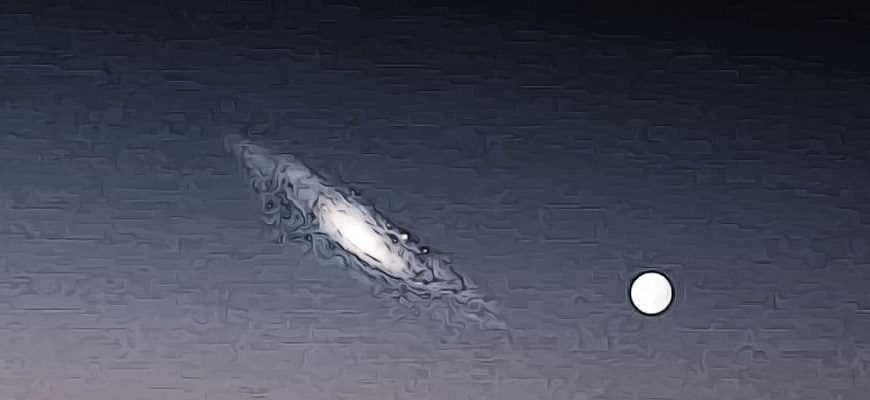
The Sun is at the center of our solar system, around which Planet Earth and seven other planets, as well as satellites, asteroids, and comets, revolve. These celestial bodies collectively form our solar system. However, beyond the Sun and planets, there exist countless other stars and their planetary systems, totaling several hundred billion, within the vast expanse of space. These stars and systems come together to create the magnificent Milky Way galaxy. Yet, the Milky Way is not the sole galaxy in the vast Universe. In fact, there are several trillion galaxies visible within the observable portion of the Universe alone.
It has been a long journey for humanity to come to this realization. The human eye is incapable of perceiving other galaxies, except for three particular cases: the Large and Small Magellanic Clouds located in the Southern Hemisphere. These two galaxies are classified as dwarf galaxies and they serve as satellites to our own Milky Way galaxy. The Andromeda galaxy, on the other hand, is the only large independent galaxy that can be observed with the naked eye. It was previously referred to as the Andromeda Nebula until its true identity was discovered relatively recently.
Discovering the truth about the Andromeda galaxy.
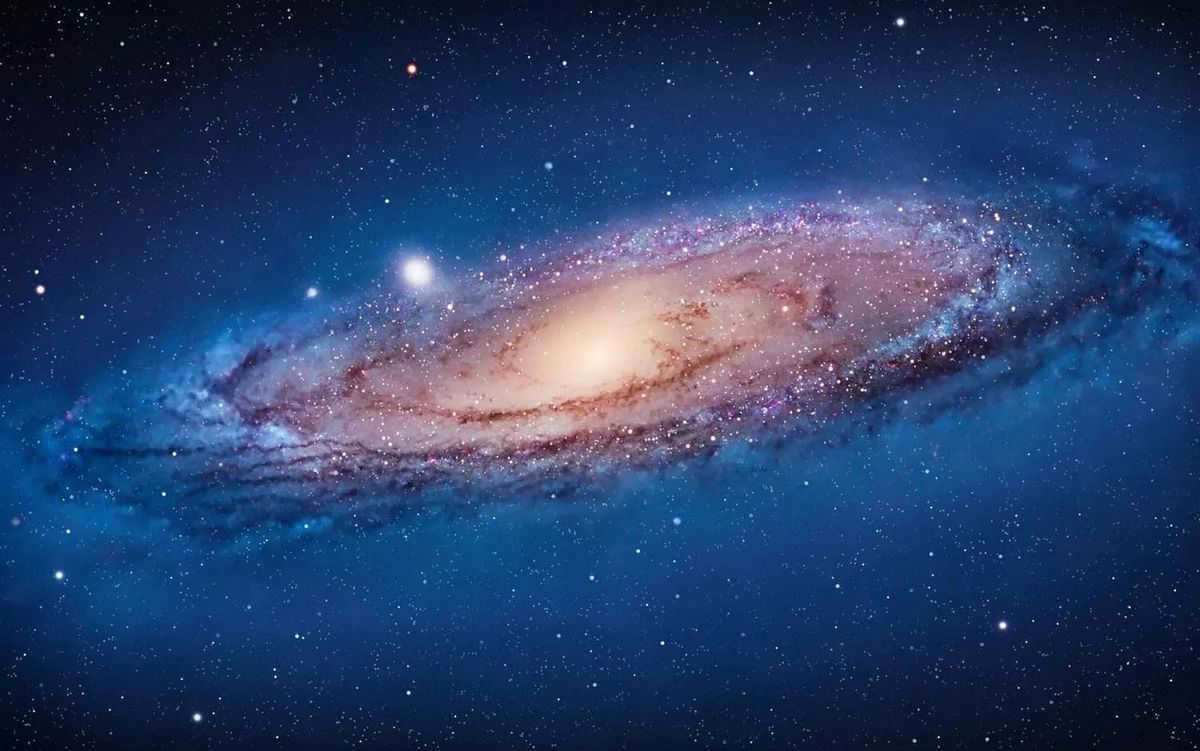
The Andromeda Nebula was first observed by Abdurrahman al-Sufi, an astronomer from Persia, in 964. He referred to it as a “misty spot” or a “little cloud.” However, in the 18th century, French astronomer Charles Messier included similar nebulous objects in his famous Messier catalog and credited the discovery of the Andromeda Galaxy to Simon Marius, a German astronomer. Marius had observed the Andromeda Nebula in 1612 using a newly invented telescope. However, the object was actually known even earlier and could be seen with the naked eye.
The naked eye cannot detect the specific characteristics of the Andromeda Galaxy. Even with the relatively weak telescopes used in previous years, there was not much to observe. As a result, its true nature remained uncertain for a significant period of time.
Throughout the 20th century, astronomers frequently engaged in debates regarding this matter. Some believed that the Milky Way encompassed the entire universe, and the hazy formations observed in the Andromeda constellation were merely clouds of gas located between stars. Other scientists argued that these formations were actually massive clusters of stars, but their distance was so vast that astronomers only perceived them as indistinct specks. Additionally, they proposed that the Milky Way galaxy was just one of numerous galaxies in the universe, with immense empty spaces separating them.
A different universe
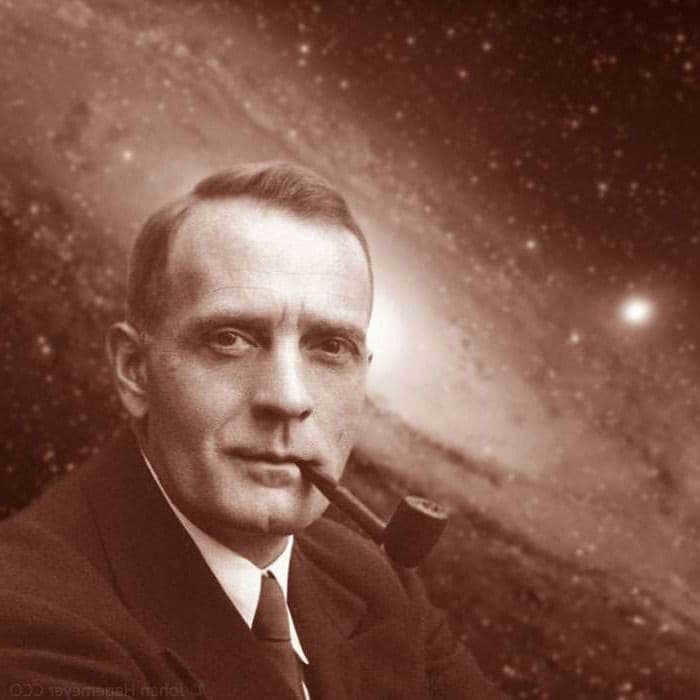
Back in 1923, Edwin Hubble, an astronomer from the United States, made a significant discovery. He was able to accurately measure the distance to the Andromeda Nebula and his findings were clear: this celestial object is not part of our own Milky Way galaxy. Instead, it is an independent galaxy situated quite a distance away from us.
Now scientists have determined the precise distance: the Andromeda Galaxy is situated 2.5 million light years away from Earth. This is a vast distance when compared to the Milky Way’s diameter, which spans only about 120,000 light years. Not only is the Andromeda Galaxy significantly larger than the Milky Way, with a diameter of approximately 200,000 light years, but it is also more massive. The Milky Way’s total mass, including both visible and dark matter, is estimated to be 850 billion solar masses, whereas the Andromeda Galaxy boasts 1.5 trillion solar masses. Furthermore, the number of stars in the Andromeda galaxy is about double the number found in the Milky Way.
The Andromeda galaxy is located at a considerable distance. However, it is still within reach of modern telescopes, allowing for the observation of captivating features. One such feature is the presence of a dust ring situated in the inner region of the galaxy. Scientists believe that this ring materialized following a collision with the dwarf galaxy M32. Similar to our own Milky Way galaxy, Andromeda also possesses satellite galaxies, currently known to number 37. Nevertheless, it is highly likely that there are numerous additional satellite galaxies yet to be discovered.
Infiltration
can be rephrased as
Penetration
.
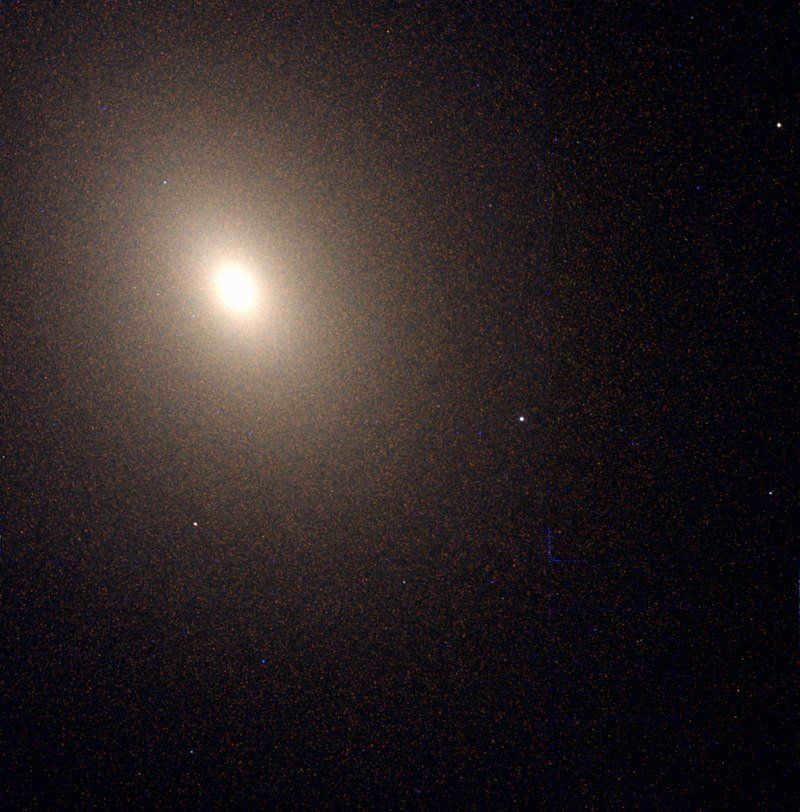
The collision between M32 and the Andromeda galaxy, which occurred approximately 200 million years ago, is often described inaccurately as an “encounter.” In reality, galaxies, even large ones, consist mostly of empty space, and the distances between stars are immense. The likelihood of two stars colliding during such an event is extremely low. Instead, when galaxies collide, they pass through each other, while their gravitational forces impact one another. The larger galaxy can absorb the smaller galaxy entirely or strip away some of its material.
Computer simulations indicate that this is precisely what transpired between M32 and Andromeda. As a result of the collision, M32 lost approximately half of its material, leading to the formation of a ring-shaped structure within the Andromeda galaxy.
There is one aspect where the Milky Way outshines Andromeda. Our galaxy experiences the birth of 3 to 5 fresh stars annually. In contrast, Andromeda only manages to form one star per year on average. This disparity can be attributed to Andromeda’s immense mass.
Over time, Andromeda has absorbed numerous minuscule galaxies, successfully weathering each encounter. However, the gravitational pull exerted by these smaller galaxies has set the gas within Andromeda into motion. This motion has rendered interstellar gas clouds unstable, leading them to transform into stars. Consequently, Andromeda used to radiate an immeasurably brighter glow, courtesy of its abundance of young stars. Yet today, it possesses scarcely any gas reserves to generate new stars. The Milky Way, on the other hand, has been more frugal with its resources, leaving it with ample material for star formation.
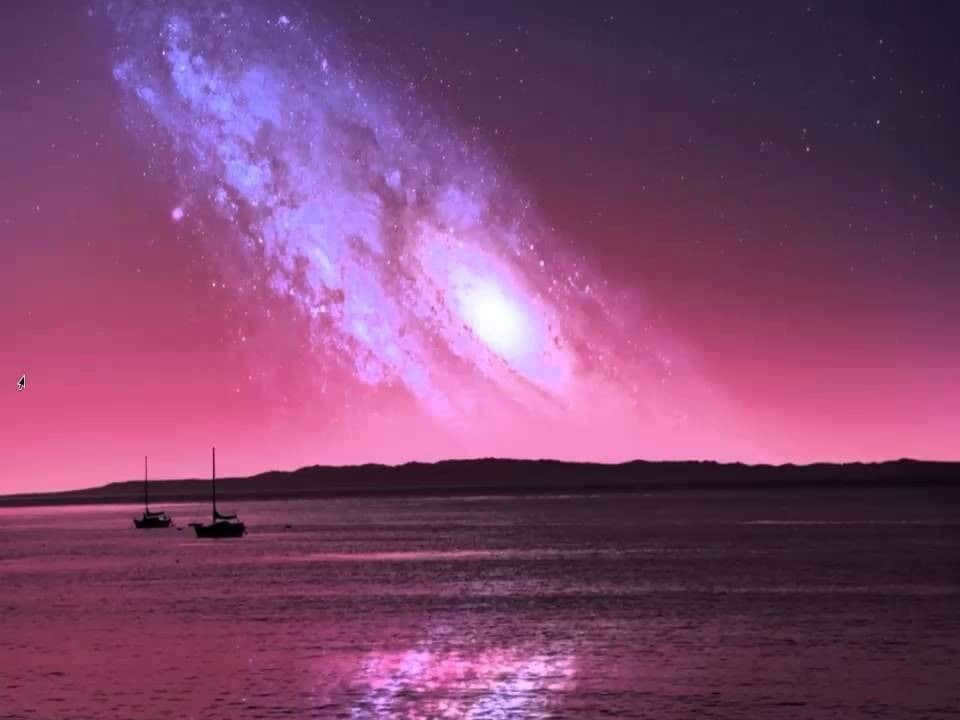
However, the significance of this is minimal. The reason being is that the Andromeda galaxy is currently in motion towards the Milky Way at a speed of approximately 410,000 kilometers per hour. In the span of three to four billion years, these two star systems will collide with one another. This collision will differ from previous ones, as it will involve two objects of nearly identical proportions. Despite the Milky Way being slightly smaller than Andromeda, its size remains substantial enough to create a significant impact. The galaxies will interpenetrate, forever bound together, ultimately merging into a single, colossal galaxy.
By the time this extraordinary event occurs, humanity will no longer exist on Earth. Nevertheless, as a precautionary measure, a name has already been assigned to the upcoming binary galaxy: “Milky Meda”….
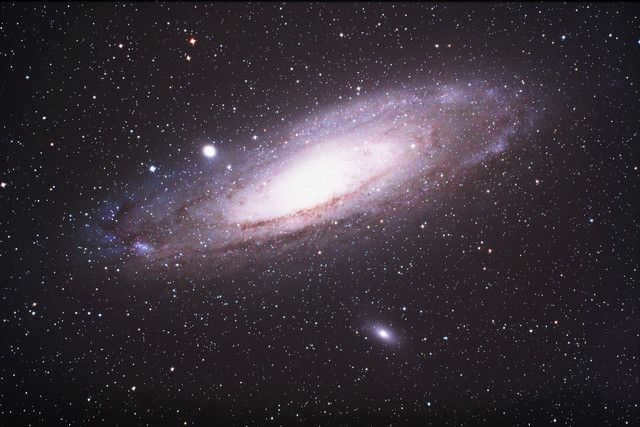

The Andromeda Galaxy, also known as the Andromeda Nebula (M31, NGC 224), is classified as an Sb-type spiral galaxy. It is the closest large galaxy to the Milky Way and is situated in the constellation Andromeda. The latest data suggests that it is located approximately 772 kiloparsecs (2.52 million light-years) away from us. The galaxy is tilted towards us at an angle of 15 degrees, has an apparent size of 3.2 degrees, and has an apparent stellar magnitude of +3.4m.
Observational history
The initial recorded mention of the Andromeda Galaxy can be found in the “Catalogue of Fixed Stars” by As-Sufi, an astronomer from Persia, in 946. In his description, he referred to it as a “small cloud”. The first detailed observation of this celestial object, using a telescope, was conducted by Simon Marius, a German astronomer, in 1612. Charles Messier, when compiling his renowned catalogue, mistakenly attributed the discovery of the Andromeda Galaxy to Marius and assigned it the designation M31. In 1785, William Herschel observed a faint red spot at the center of M31. He mistakenly believed that this galaxy was the closest among all nebulae and even calculated its distance (which was completely inaccurate) to be equivalent to 2000 times the distance between the Sun and Sirius.
In 1864, William Huggins made an observation of the spectrum of M31 and discovered that it differed from the spectra of gas-dust nebulae. The data gathered suggested that M31 was composed of numerous individual stars. Based on this evidence, Huggins concluded that the object had a stellar nature, a conclusion that was later proven to be true.
In 1885, a supernova known as SN 1885A, or S Andromeda, erupted in M31. This remains the only recorded supernova event in the history of observations of M31.
The first images of the galaxy were captured by Welsh astronomer Isaac Roberts in 1887. Using his own observatory in Sussex, Roberts photographed M31 and was the first to identify its spiral structure. However, at the time, it was still believed that M31 belonged to our own Galaxy, and Roberts mistakenly believed it to be another solar system with forming planets.
The velocity of the galaxy was measured by American astronomer Vesto Slifer in 1912. Through the use of spectral analysis, he determined that M31 was approaching the Sun at an unprecedented speed for celestial objects at that time: approximately 300 km/s.
Researchers at the Harvard-Smithsonian Center for Astrophysics, after studying 10 years worth of observations of M31 with the Chandra space observatory, made a fascinating discovery. They found that the luminosity of matter falling onto the core of the Andromeda galaxy was relatively faint until January 6, 2006, when a sudden burst of activity caused a drastic increase in the X-ray brightness of M31, reaching levels 100 times greater than before. Although the brightness subsequently decreased, it still remained 10 times more intense than pre-2006 levels.
The Andromeda Galaxy, similar to the Milky Way, is a member of the Local Group and is currently moving towards the Sun at a velocity of 300 km/s, resulting in a violet-shifted appearance. Scientists have determined the direction of the Sun’s motion within the Milky Way, revealing that the Andromeda Galaxy and our own Galaxy are approaching each other at speeds ranging from 100 to 140 km/s. As a result, the collision between these two galactic systems is expected to transpire approximately 3 to 4 billion years from now. If this event occurs, it is likely that the two galaxies will merge, forming a single, larger galaxy. It is also possible that our solar system could be flung into intergalactic space due to significant gravitational disruptions. However, it is unlikely that the destruction of the Sun and planets would occur during this catastrophic process.
Structure
The structure of the Andromeda Galaxy is unique and fascinating. With a mass that is 1.5 times larger than the Milky Way, it holds the title of being the largest galaxy in the Local Group. Recent observations made with the Spitzer Space Telescope have revealed that the Andromeda Galaxy is home to an astounding amount of stars, estimated to be around a trillion in total. This vast number of stars makes it a truly remarkable celestial object.
In addition to its impressive size and stellar population, the Andromeda Galaxy also possesses several dwarf satellites. These smaller companion galaxies, such as M32, M110, NGC 185, and NGC 147, orbit around the Andromeda Galaxy, adding to its cosmic allure. There may even be other dwarf satellites that have yet to be discovered, further enhancing the complexity of the Andromeda Galaxy’s structure.
Although the Andromeda Galaxy is undeniably massive, some scientific findings suggest that the Milky Way might actually contain more Dark Matter. This intriguing possibility raises the question of whether our own galaxy, the Milky Way, could be the most massive in the Local Group. Further research and observations will be necessary to determine the true nature of these galaxies and their respective masses.
The central region
The central region of M31, similar to many other galaxies (including our own Milky Way), harbors a potential supermassive black hole (SMBH). Scientific calculations have demonstrated that the mass of this SMBH surpasses 140 million times that of our Sun. In 2005, the Hubble Space Telescope made an intriguing discovery of a peculiar disk composed of young, blue stars encircling the SMBH. These stars revolve around the relativistic entity, much like planets orbiting the Sun. Astronomers were perplexed by the formation of such a torus-shaped disk in such close proximity to such an immense object. According to theoretical calculations, the immense tidal forces exerted by the SMBH should have hindered the condensation and formation of new stars from the gas and dust clouds. Further investigations may yield valuable insights into this phenomenon.
The discovery of this disk has added another piece of evidence to support the theory of black hole existence. In 1995, astronomers initially observed a blue light at the core of M31 using the Hubble telescope. After three years, they identified the source of the light as a cluster of blue stars. It was not until 2005 that observers, using a spectrograph on the telescope, determined that the cluster is made up of over 400 stars that formed about 200 million years ago. These stars are arranged in a disk with a diameter of only 1 light-year. The disk also contains older and cooler red stars that were previously detected by Hubble. The radial velocities of the stars in the disk have been calculated and were found to be a record-breaking 1000 km/s (equivalent to 3.6 million kilometers per hour). This speed is so fast that one could circumnavigate the Earth in just 40 seconds or reach the Moon in only six minutes.
Aside from the BFD and the disk of blue stars, there exist other entities within the galactic core. Back in 1993, a pair of star clusters were unexpectedly discovered in the heart of M31. Astronomers were taken aback by this finding, as the two clusters naturally merge into one within a relatively short timeframe of around 100 thousand years. Calculations suggested that the merger should have occurred millions of years ago, but for unknown reasons, it did not transpire. Scott Tremaine from Princeton University proposed a plausible explanation, suggesting that what appears to be a double cluster is actually a ring composed of aged red stars. This ring may give the illusion of two clusters due to our limited perspective, only revealing stars on opposing sides of the ring. Hence, this ring ought to be situated 5 light years away from the NFD and encircled by a disk comprised of youthful blue stars. Notably, the ring and disk are oriented towards us on the same side, potentially indicating their interconnectedness. During a study of the center of M31 utilizing the XMM-Newton space telescope, a team of European researchers stumbled upon 63 distinct sources of X-ray radiation. A majority of these sources (46 objects) have been identified as low-mass X-ray double stars, while the remainder are either neutron stars or possible black holes within double systems.
Other items
The galaxy has recorded approximately 460 globular clusters. The largest of these, known as Mayall II or G1, is more luminous than any other cluster in the Local Group and even brighter than Omega Centauri, the brightest cluster in the Milky Way. Mayall II is located about 130,000 light-years away from the center of the Andromeda Galaxy and contains at least 300,000 ancient stars. Its structure and the presence of stars from different populations suggest that it is likely the core of an ancient dwarf galaxy that was once assimilated by M31. Research indicates that there is a black hole candidate with a mass of 20,000 Suns at the center of this cluster. Similar objects also exist in other clusters.
In 2005, a previously unknown type of star cluster was identified in the M31 halo. These newly found clusters consist of numerous bright stars, comparable in number to globular clusters. However, what distinguishes them from globular clusters is their substantial size – spanning several hundred light-years – and their relatively lower mass. The spacing between stars within these clusters is also significantly larger. It is possible that these clusters represent an intermediate category of systems situated between globular clusters and dwarf spheroids.
Within this galaxy, there exists a star known as PA-99-N2, which is orbited by an exoplanet – marking the first discovery of a planet outside of the Milky Way.
The optimal period for observing the Andromeda Nebula is during the autumn and winter seasons. When gazing upon the night sky in rural areas, one can easily spot the radiant and diffuse oval M31 even without possessing extensive observational skills. This celestial body holds the distinction of being the farthest object visible to the naked eye from Earth. Given the finite nature of light’s velocity, we perceive it as it existed two and a half million years in the past. It is worth noting that there were no individuals from the modern human species inhabiting Earth during that era! However, it is important to bear in mind that, in accordance with the Special Theory of Relativity, it is impossible to ascertain the appearance of this galaxy at the “present moment,” as what we perceive is our own “present moment.”
Even in cities with bright lights, the galaxy can still be seen through binoculars. However, when observed with amateur telescopes that have a medium aperture (150-200 mm), the view is often disappointing. Even on a clear night without the moon, the galaxy appears as a large, blurry ellipsoid with dim edges and a bright center. If you look closely, you might notice a couple of dust lanes on the northwestern edge (closer to us) and a slight increase in brightness in the southwest (a region where stars are being formed in our neighboring galaxy). Other than that, there are no other details to see, except for two satellites – small elliptical galaxies called M32 and M110. It’s nothing like the colorful images you see in popular publications!
Unfortunately, these are the idiosyncrasies of human night vision. Despite their incredible ability to detect light, our eyes cannot accumulate light over a long period of time like modern photodetectors can. Additionally, our ability to see in the dark comes at the cost of sacrificing color recognition – everything appears gray at night! – and a significant decrease in visual acuity. As a result, when observing objects in deep space, we can only see faint, blurry, light gray images against a dark gray background. The immense size of M31 further amplifies this lack of contrast and detail.
